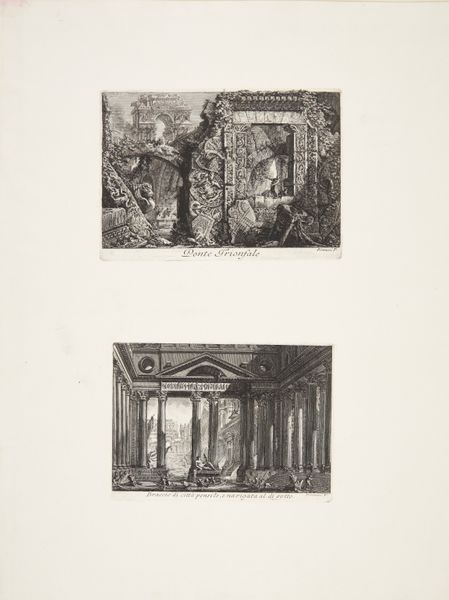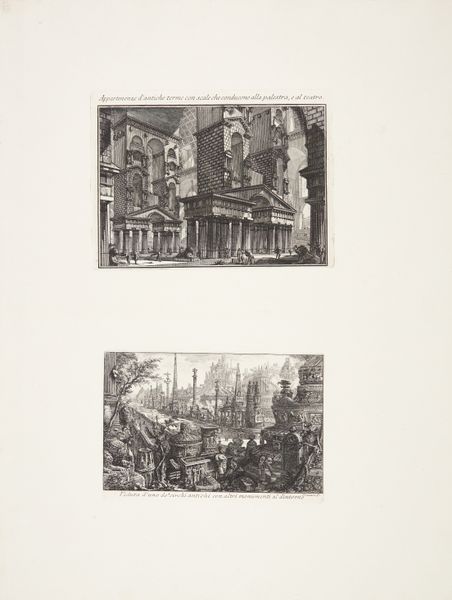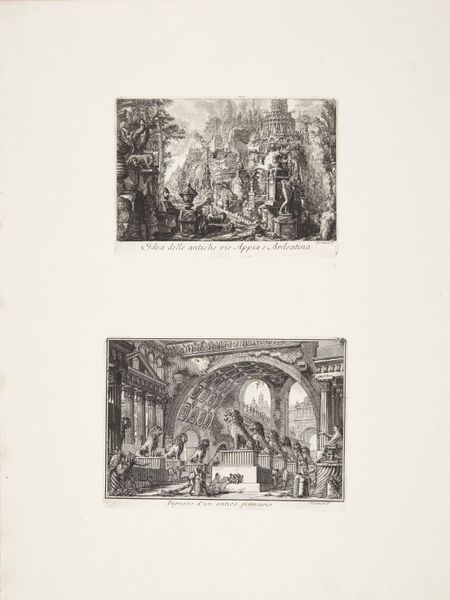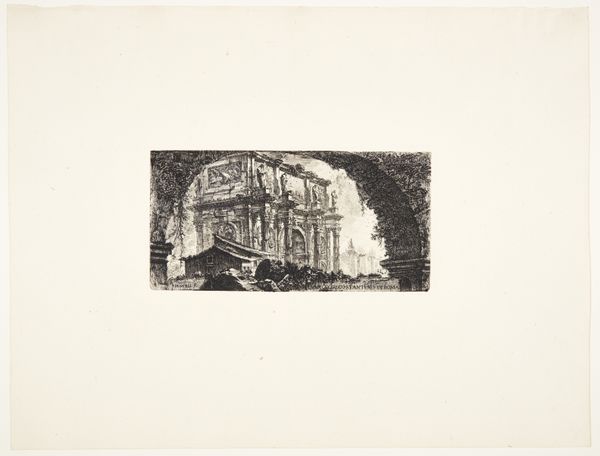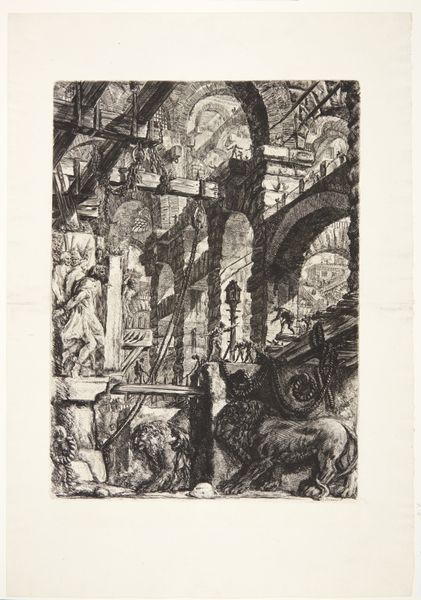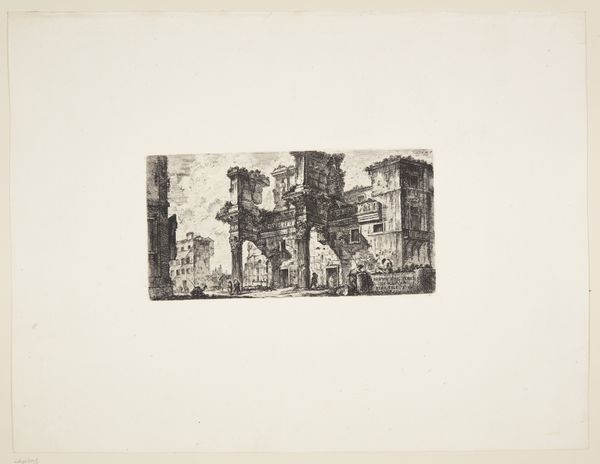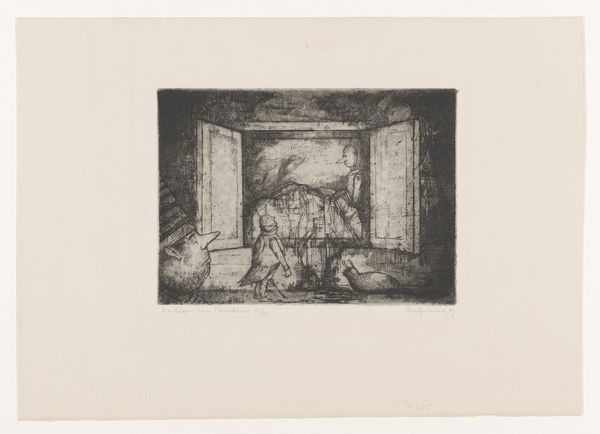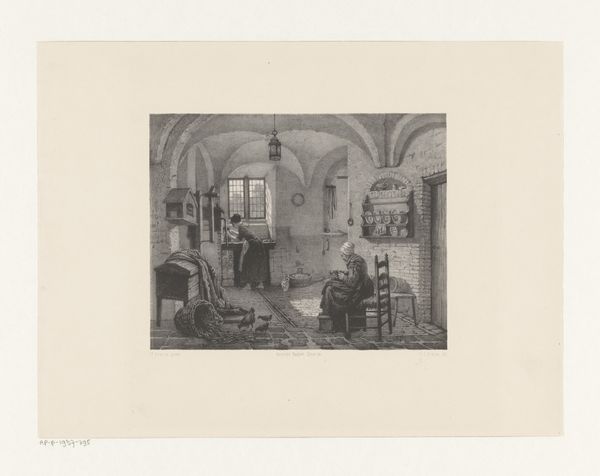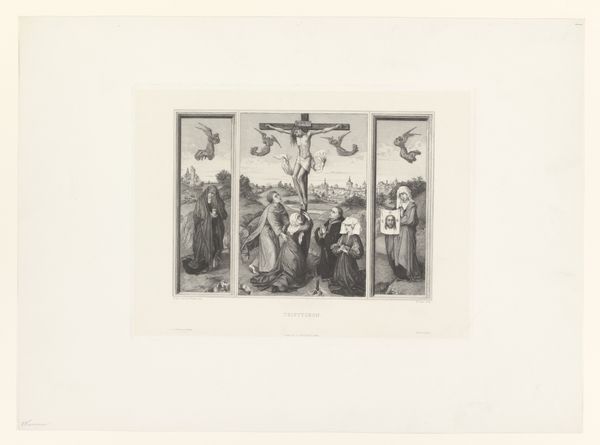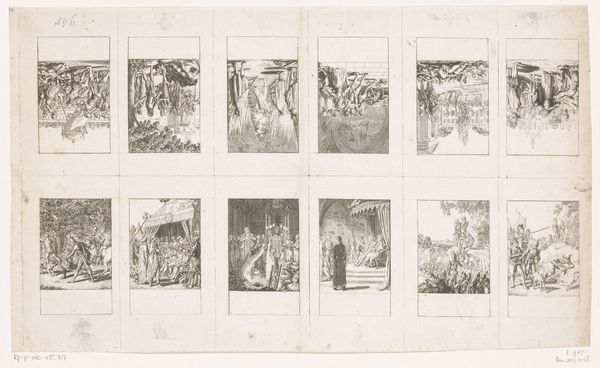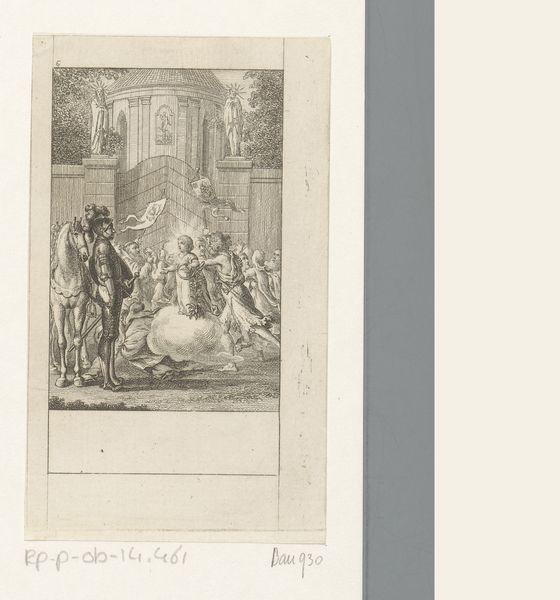
Ruins of Egyptian and Greek architecture / Imaginary reconstruction of a royal atrium 1758 - 1761
0:00
0:00
print, engraving, architecture
# print
#
landscape
#
classical-realism
#
ancient-mediterranean
#
cityscape
#
history-painting
#
engraving
#
architecture
Dimensions: 543 mm (height) x 415 mm (width) (bladmaal)
Editor: Here we have Giovanni Battista Piranesi’s "Ruins of Egyptian and Greek architecture / Imaginary reconstruction of a royal atrium," made between 1758 and 1761. It's an engraving. I'm struck by how these seemingly disparate architectural elements are combined into a unified, if somewhat fantastical, whole. What formal qualities do you find most compelling in this print? Curator: Note the interplay between light and shadow achieved through the intricate lines. Piranesi utilizes the engraving technique to its fullest, creating depth and texture. Consider how the artist uses framing within framing. One plate depicts ruins, the other depicts an atrium framed to invite our analysis, so let's break each image down one by one. What compositional techniques has Piranesi employed within the framing to create this sensation? Editor: Well, in the first ruin image, the crumbling structure seems to almost burst forth with the heavy line work giving that feeling of deterioration. With the second frame, the viewer gets a perspective that makes you feel small because of its towering composition. What do you mean by framing within framing? Curator: Indeed! On the left is framing in ruins that give a diorama effect within the full print format, further emphasizing the work's depth. He then contains it with borders that both isolate the artwork and gives a look at this grand architecture almost contained. The borders focus attention to details of space and proportion. How do these formal elements contribute to your overall understanding of the work? Editor: I see what you mean! The framed composition spotlights contrasts that amplify a response for each work, so Piranesi directs us. It makes the scale feel immense despite being a print. Curator: Precisely. By directing the viewer's eye through carefully constructed spatial relationships and intricate detailing, Piranesi effectively conveys the grandeur and the weight of the ruin against its imagined beauty, both confined. Editor: So it’s about how Piranesi uses form to communicate this vision of grand classical architecture and the ruin as equally sublime! Curator: Exactly! He plays on binaries that reveal the truth about art in antiquity.
Comments
No comments
Be the first to comment and join the conversation on the ultimate creative platform.
